Rachael Singleton will tell you she spends time thinking about her textile art almost as much as she does creating. As a self-described ‘sense maker’, Rachael likes to reflect on the creative process and, in turn, how her artistic voice has developed over time.
One way Rachael sorts out her thoughts is on her blog. Writing posts for more than 10 years, Rachael candidly documents her hits and misses as a way to examine both a work of art and the creative process that brought it to life. What worked? What didn’t? What could I do differently? Should I continue or switch gears? How does this make me feel?
Rachael has an incredibly diverse portfolio. From fabric to paper to clay to encaustic wax, nothing is off limits. And her love for vessels is apparent. Themes of constraint and containment tend to gain much of her attention, and the end results are both surprising and charming.
Rachael also has what she calls ‘an ongoing obsession’ with stones and stone walls. It’s lasted almost a decade, and she can’t shake it. Be sure to check out her sneak peek into her latest stone project that’s her biggest work to date.
Self taught story
Rachael Singleton: The first textile art I remember creating was a Clanger figure from a rather old TV children’s programme. I used an old grey sock, and its nose was long. I was very proud of it.
I grew up in a family of makers. My grandma and mum made beautiful clothes, and they also knit, crocheted and tatted. My mum also became a very talented pillow-lace maker. I tried a bit of all that, except for making lace. I didn’t think I could do the maths.
My mum taught me how to sew and embroider, but my grandma was brought to tears with giggles when she tried to teach me how to crochet. I was left-handed, which was unheard of in her generation. She didn’t know what to do with me! I think that’s the only time I saw her cry.
I never did art or textiles in school outside of a compulsory apron sewing project as part of domestic sciences. Let’s just say I wasn’t a fan of a sewing machine for a long time after!
Despite having no formal training, I’m still a motivated student through self-teaching, an occasional workshop, group memberships and friends and mentors.
“There’s so much information and inspiration out there, especially online.
But I need to make sure it doesn’t drown out or dissolve my own thinking path.”
Rachael Singleton, Textile artist
Some years ago, I enrolled in Kim Thittichai’s nine-month experimental textiles course, and I adored it. It acted as a catalyst to bring things together with textile art and help me develop my own voice.
Song of the stone wall
I have an ongoing obsession with stones and stone walls. It’s lasted more than seven years, and I’m still not done with it. Where I live, I’m surrounded by a feast of stone houses and stone walls. I love the pebbles’ colours and patterns, and they also feel wonderful in the hand.
I also adore the shapes of stone walls and how they host tiny natural worlds. At first, I delighted in representing their visual inspiration, but as time has passed, I’ve developed a much deeper personal aspect to my preoccupation.
“I think if we embrace our weirdness and stick with an obsession, that’s where we find the gold.
It takes time to understand what holds our interest and peel away the layers.”
Rachael Singleton, Textile artist
A few years back, I came across a poem called Song of the Stone Wall written by Helen Keller. She was deaf and blind yet rose to do great things in the USA. I was utterly amazed by her language choices and imaginative descriptions of following a long and winding stone wall. It’s an extensive but worthwhile read, and I’ve been developing a large piece in response to her words and phrases.
For example, Keller’s poem starts ‘Come walk with me’, and I envision a hung piece with a number of figures that create shadows and can be both walked through and touched. Many of the figures are deliberately tactile, which would have been Keller’s main sense.
French knots represent braille, as well as inclusion of pieces of her poem written in braille by a friend. Moss areas will be soft and tactile, while the stone surfaces will include hard ridges.
Each figure includes at least 15 layers of teabag paper on muslin, many of which are printed on a gel plate. Some include black and white photo transfers of stone walls, and others are built up by entrapping fibres. All figures are painted with acrylic paint, and then I add hand stitch to various degrees. I’m also exploring how to create more plain figures in response to Keller’s ‘thousand hues of grey’, so the detailed figures aren’t overwhelmed.
This project will take a long time to complete, but I’m delighted when I return to make a few more figures in unique ways. It feels important to me, so I’d love to see it completed in the next year or so.
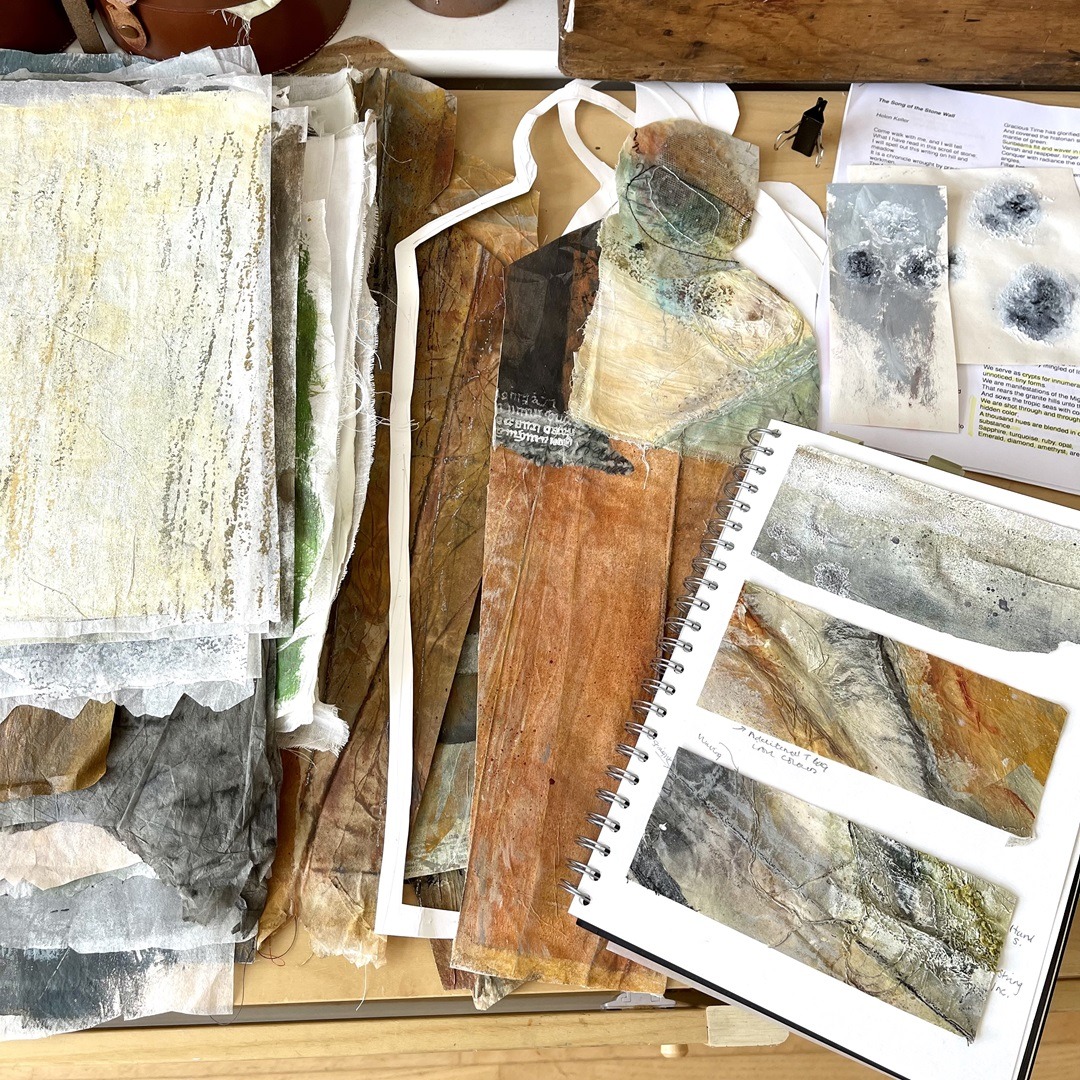
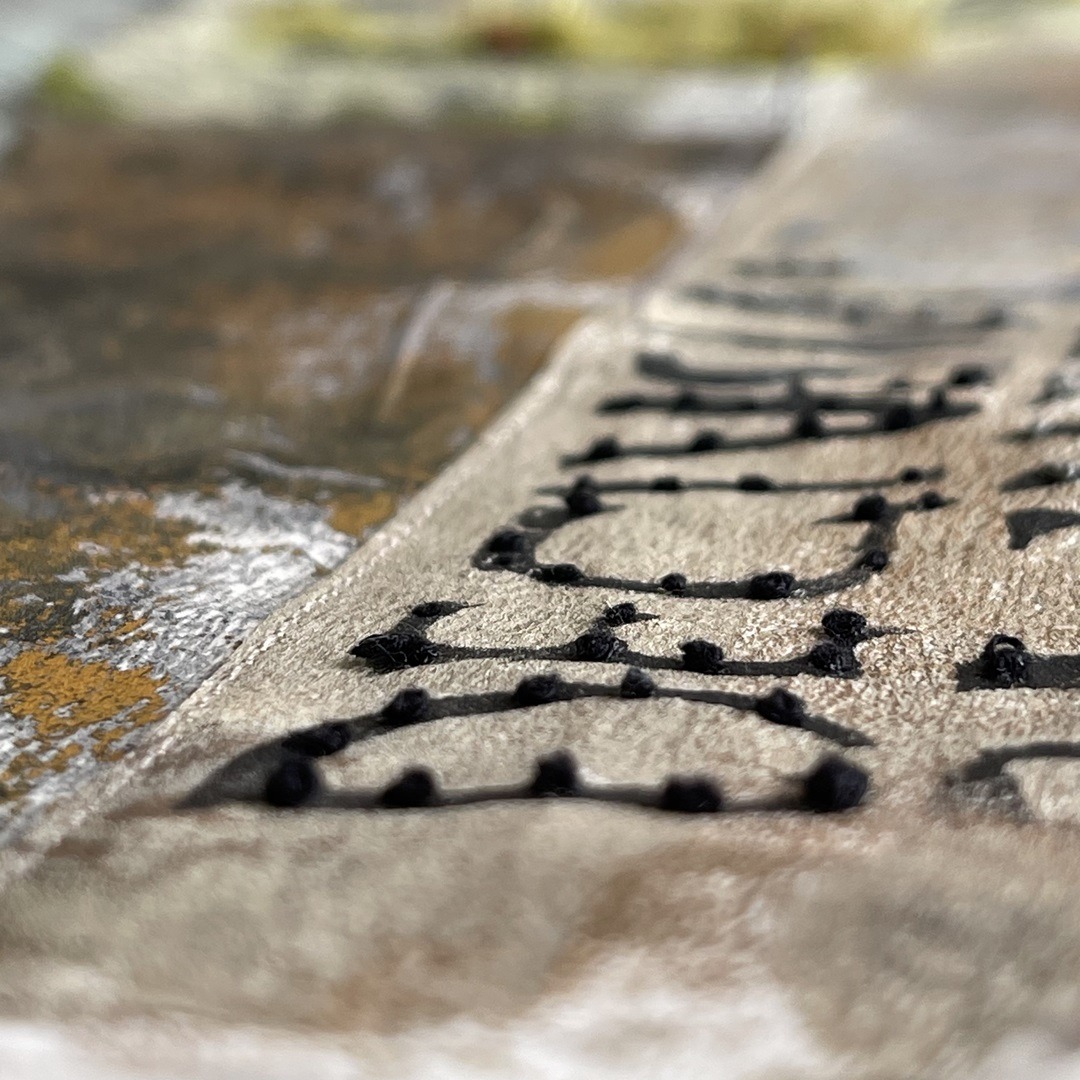
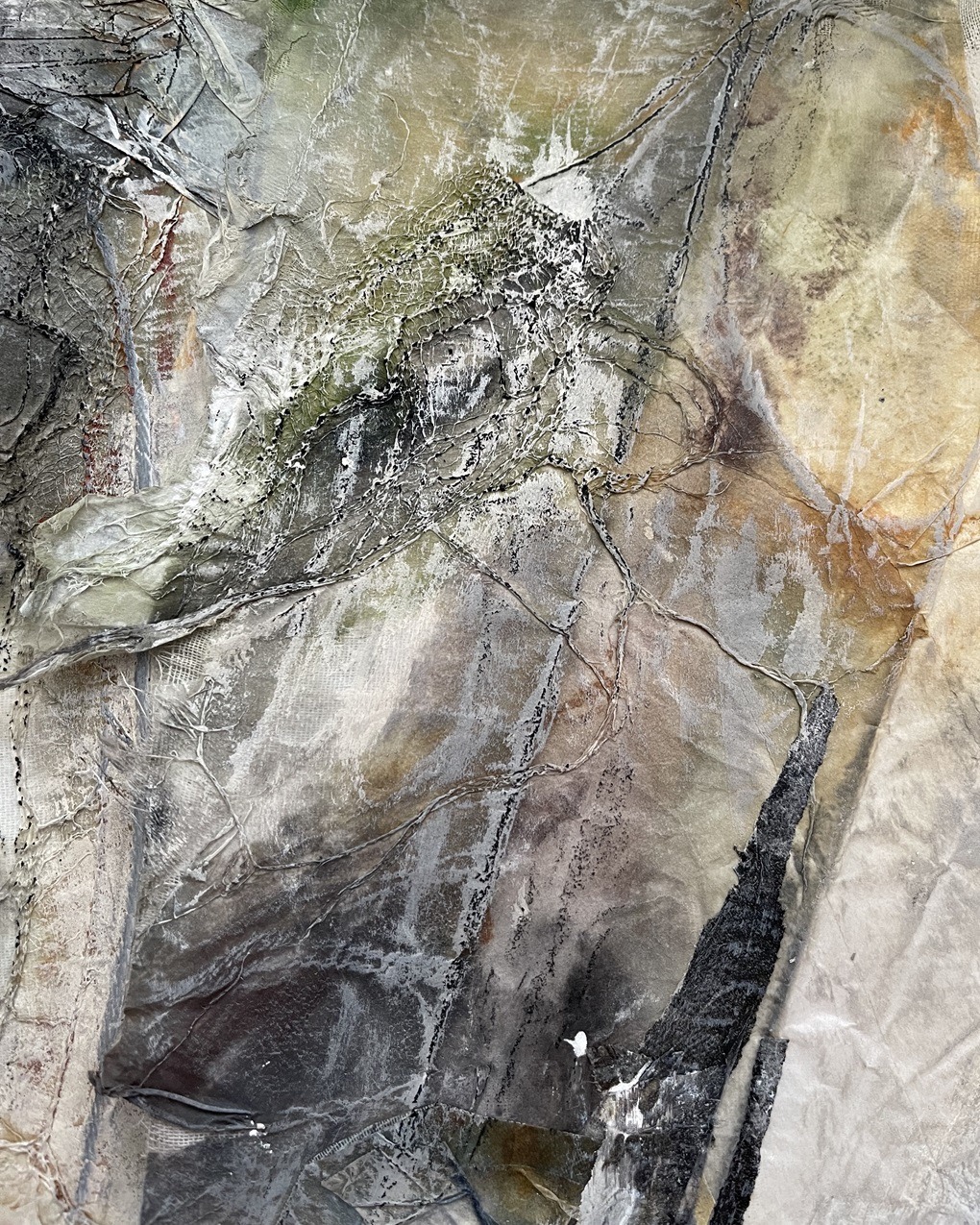
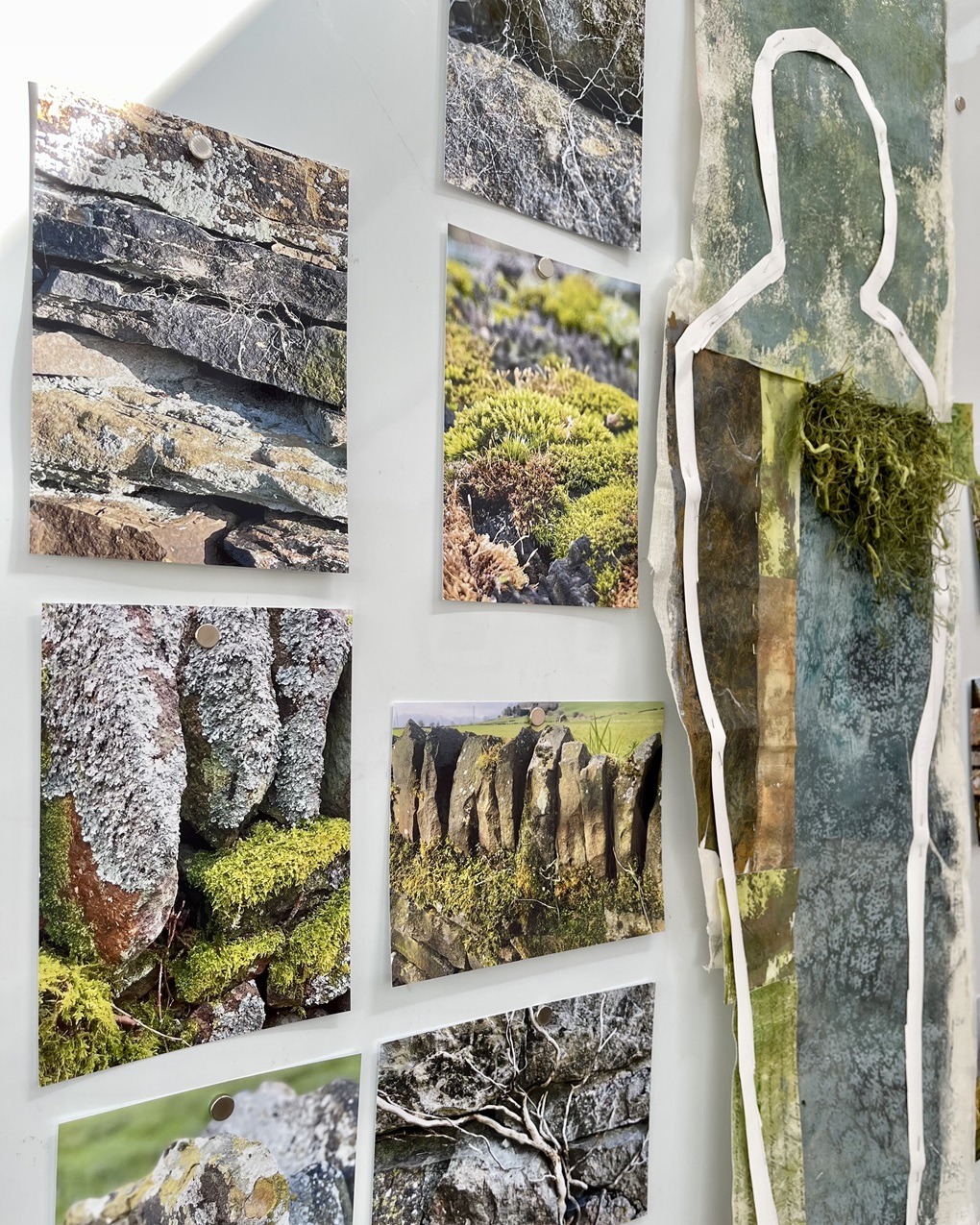
Containment & constraint
In 2019, a friend and I were invited to take part in the Maker Project. The invitation was to change a chair frame in any way we wished and to show our creative process along with the final artwork. We realised we shared experiences of feeling contained and constrained both positively and negatively.
So, we created a chair frame that looked to be safe to sit upon, but it definitely wasn’t. It had rusty textiles as its seat, the back was held together with rusting wires, pieces were cut out of the frame, and there were eyes that looked at you if you were to sit down.
Since that project, I’ve been considering the duality between containment and constraint of stone walls. I know stone feels strong and safe. My house is built from it and my soul feels right living inside of it. But by definition, a wall also constrains.
Then I realised I was drawn to the crumbling parts of stone walls, which made me reflect on what’s crumbling in me. For example, I’ve embraced a lot of ‘should’ and ‘ought’ thoughts that have constrained me in ways that no longer serve me, so I’m pushing those big stones over.
I also realised I’ve been physically housing and containing things for as long as I can remember.
“I love boxes, ceramic vessels, little houses, and nests.
I think it’s human nature to want to keep something, to protect it, to elevate and celebrate its worth.”
Rachael Singleton, Textile artist
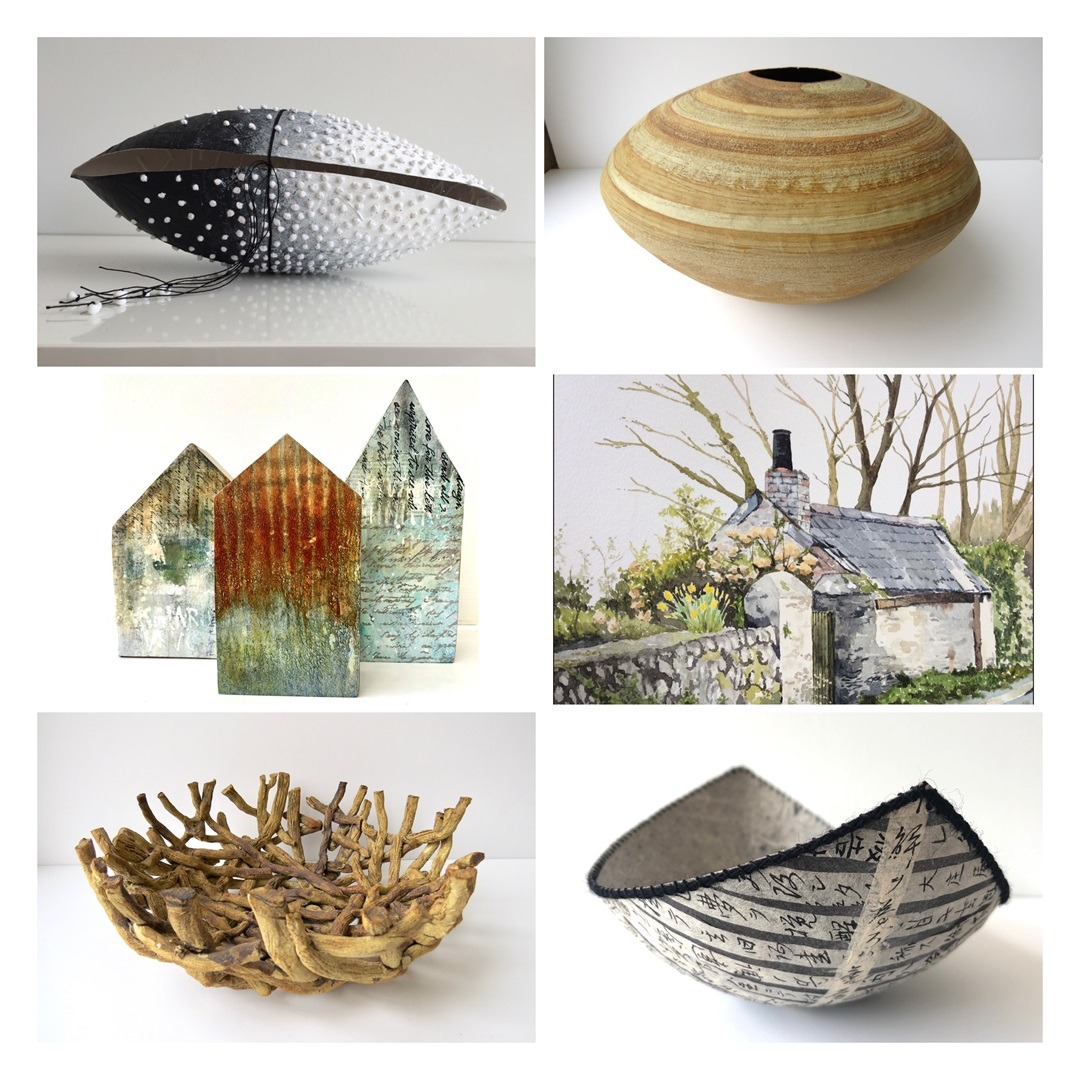
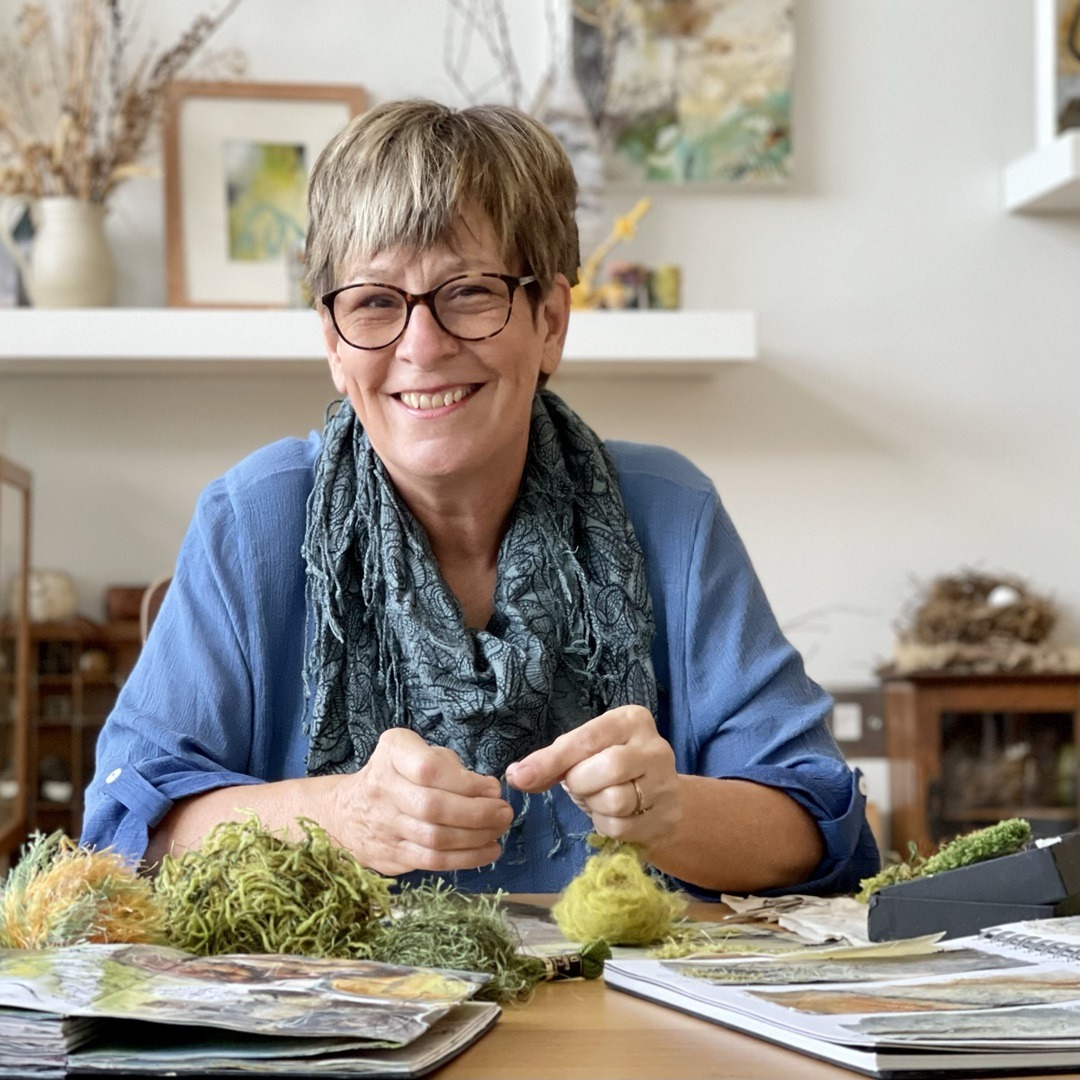
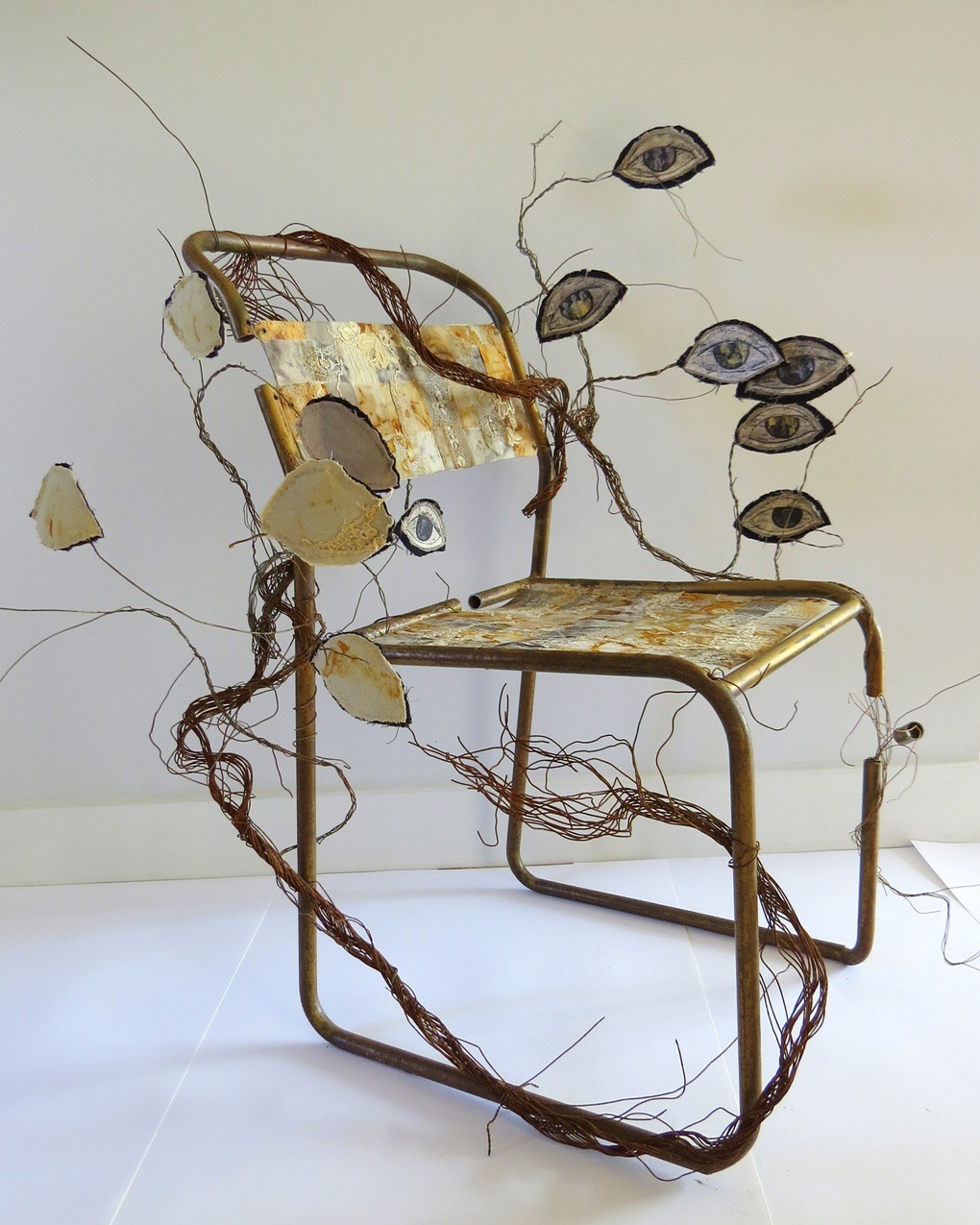
Objects of attention
I’ve always been drawn to housing objects, and the symbol and shape of a house is pleasing. Over the years, I’ve made a few different types of houses, and it seems to be a natural way to celebrate my delight in small found objects. I’ve always enjoyed combining and recombining, and I love building textures and layered surfaces.
The houses are made from grey board covered in teabag paper and gesso to create a smooth finish. The outside is made from all sorts of thin textiles and papers layered with an encaustic medium for durability. Some of the lines that look drawn are actually made on thin wet-strength papers that turn transparent when layered. From start to finish, each house takes many hours to create.
I can’t remember how the fabric rolls started. I think when making the first house I had a lot of leftover materials, so I stitched them onto a long piece of muslin. Then I realised the width fit inside, so the idea was born. I toyed with the idea of attaching the lengths separately on bobbins, but I decided to have them tumble out of the houses.
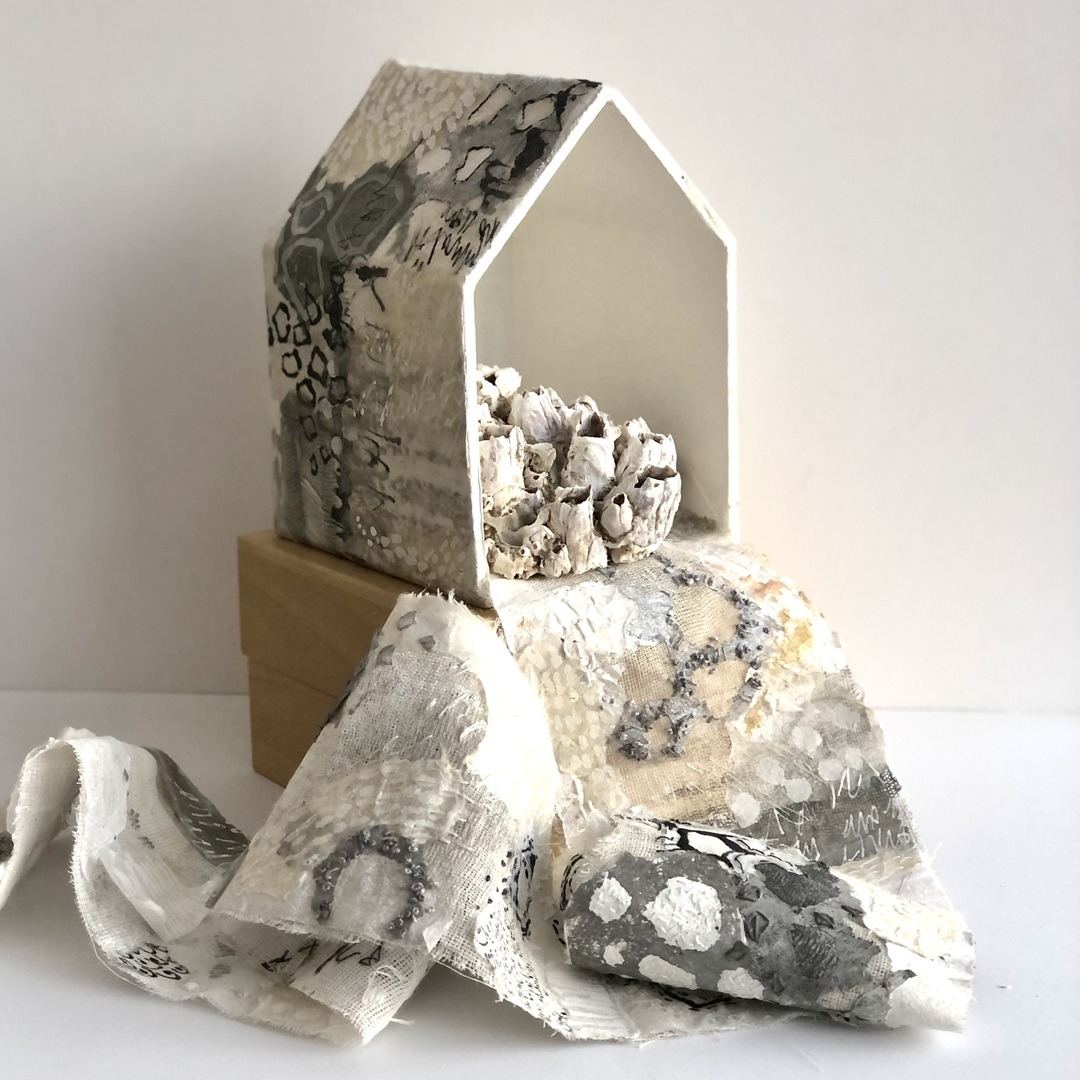
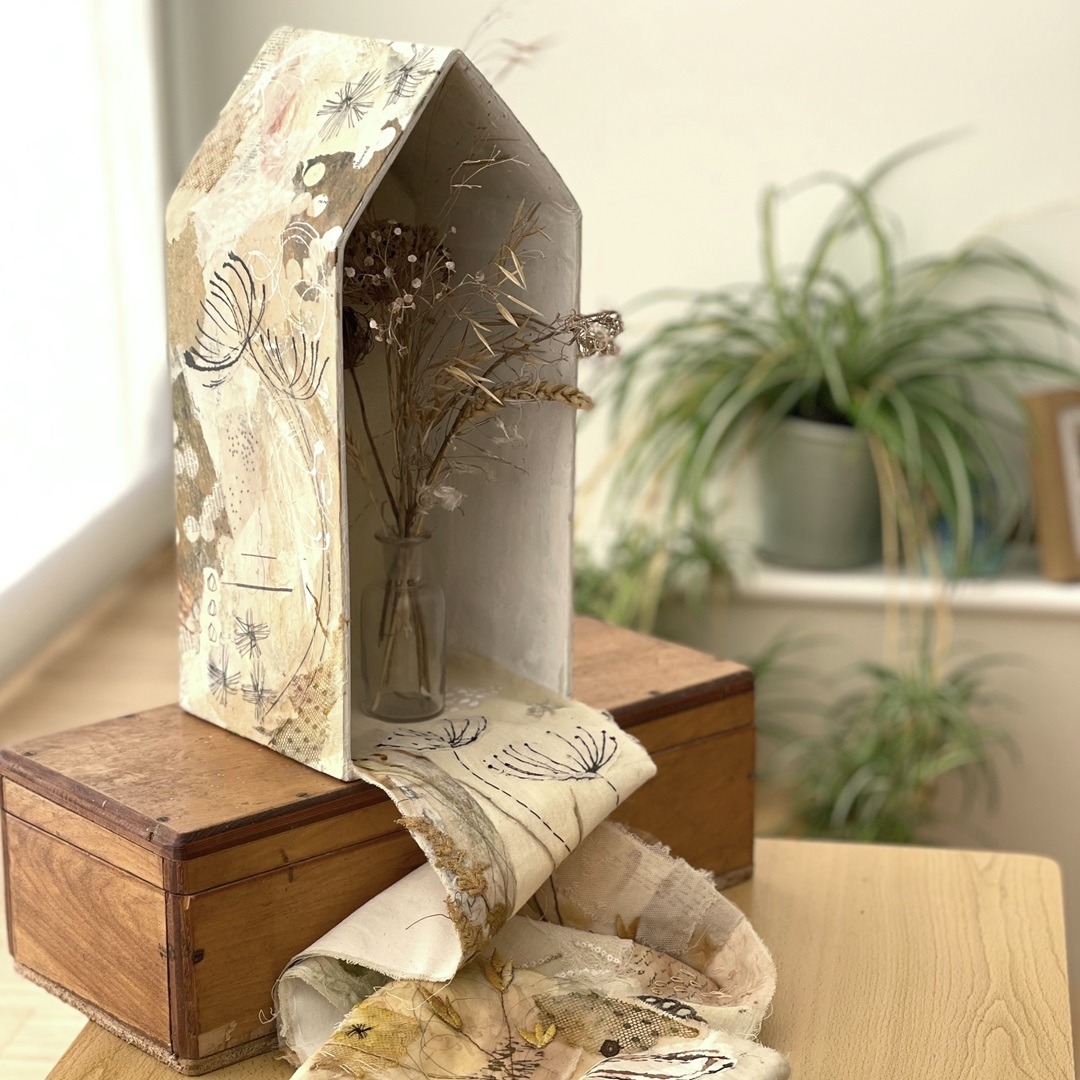
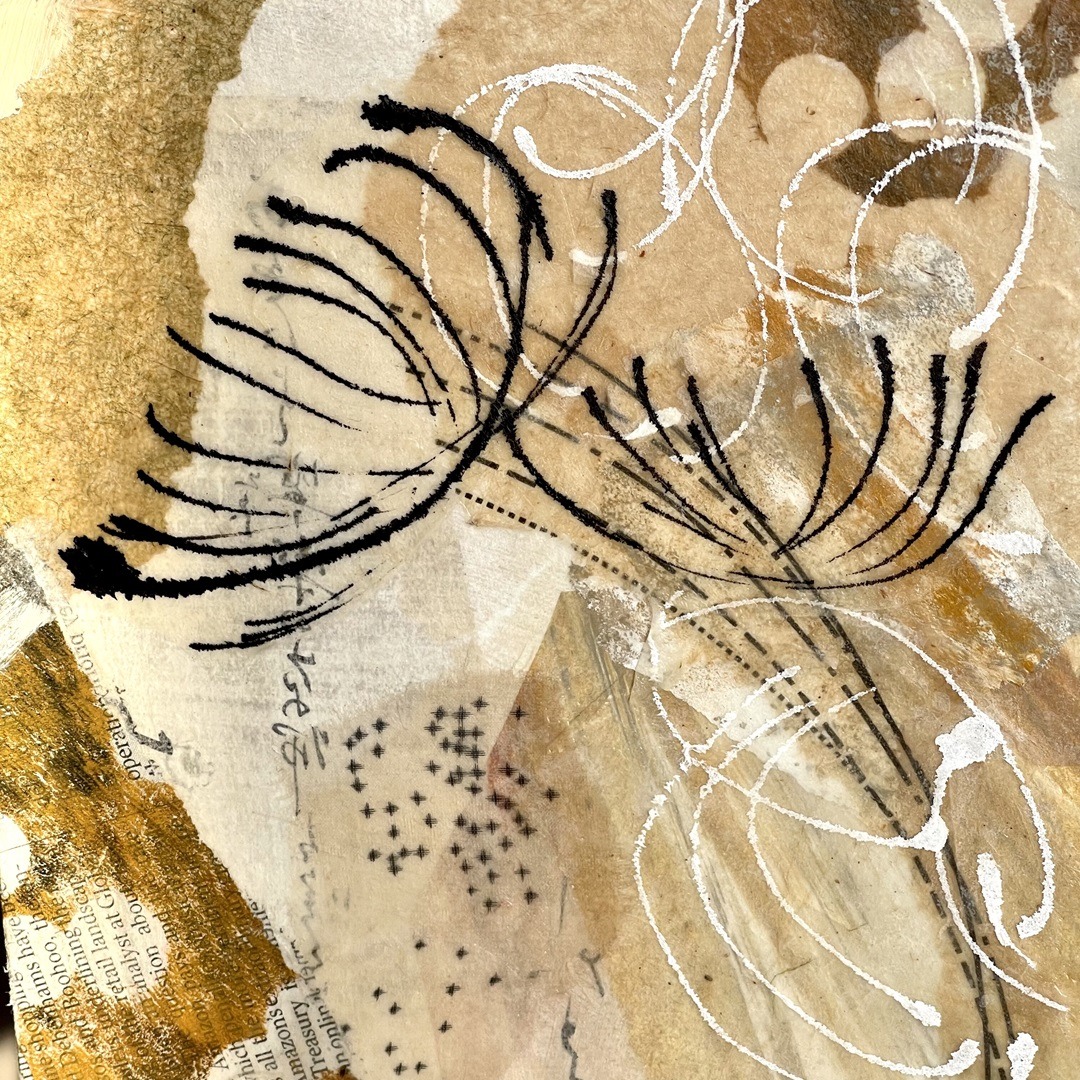
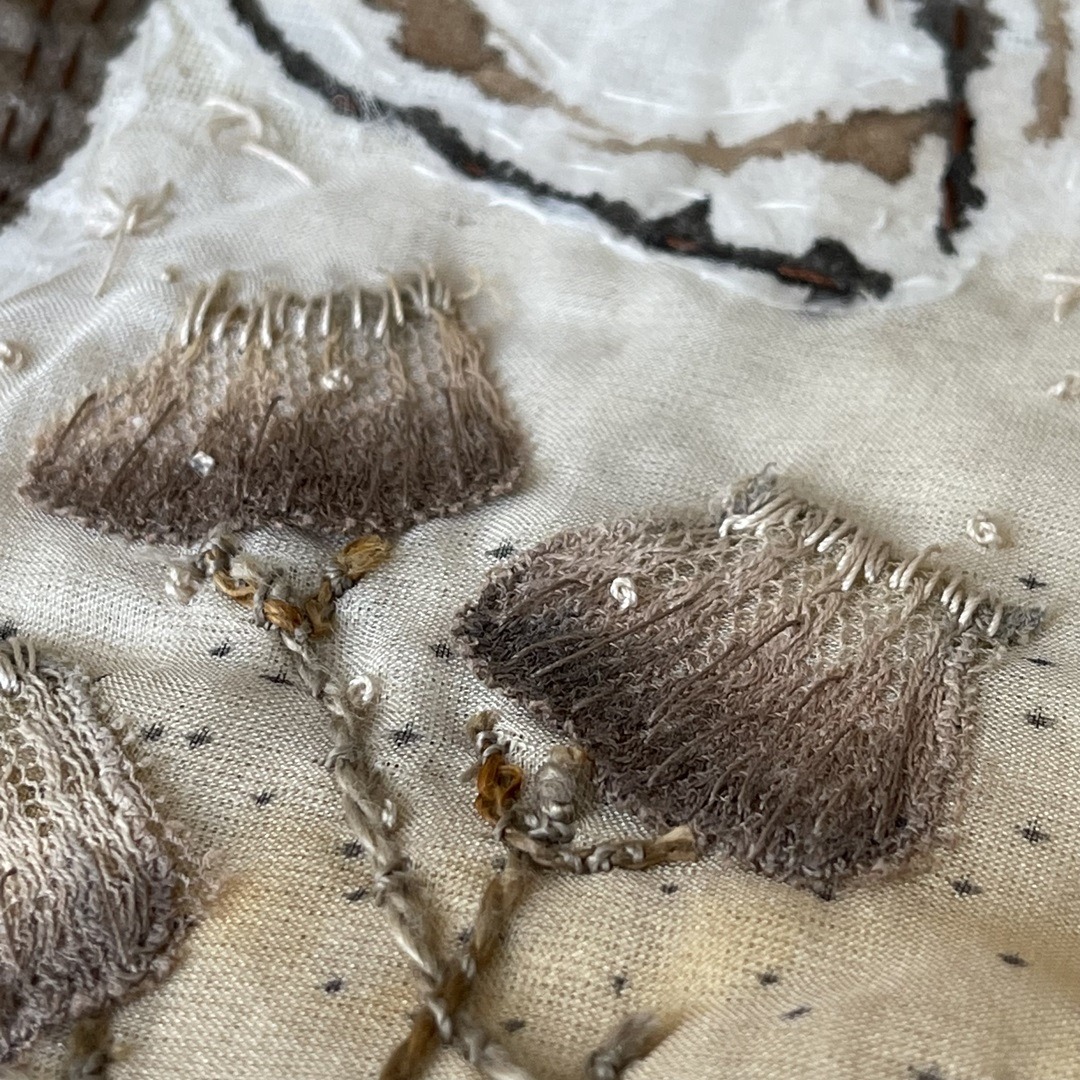
Stitch pot love
I’ve been making tiny stitch pots for a while, and my reason for doing so has been a bit of a puzzle. Of course, I enjoy the pleasing process and the little designs that come to life. And they’ve been a source of comfort to make over many evening hours.
“But I’ve recently realised, in addition to enjoying the gentle work of hand stitching, my repetitive act of making vessels is a way of safely containing me.”
Rachael Singleton, Textile artist
In 2021, I was visiting Ireland with a friend, and we both had brought small snippets of fabrics to play around with during our stay. We swapped a few things, and I started hand stitching little pieces of fabric and yarns to represent what had caught my attention each day: a sunrise, a rusty post, the beach, part of a garden, etc. At first, it was just something to do, but gradually my small strip of stitching became more meaningful.
I turned the strip into two vessels when I returned home, but the end results were unsatisfying. A year later, I took them apart and remade them into smaller vessels. It was a gamble, but I chopped them into small rectangles and reassembled them into very small pots.
The scale was much more successful, as the busy stitching added small abstract designs as you turned the pot around. Since then, I’ve continued making the pots based mostly on memories, but also seasons, holidays and simply playing with colours.
They’re simple to make. I use calico or repurposed fabrics as my background cloth cut to around 20cm square. I add my snippets and tack them down, and then I spend hours hand stitching all over.
Once complete, I iron it, and then I take a deep breath before I chop it up into small rectangles. A bit of stitch around the tops and bottoms gets lost in the cutting process, so I try to get my favourite parts in the middle or just rely on serendipity.
The tops are then turned over and stitched, the side is pinned and stitched, and the bottom is snipped and gathered with a thread. I don’t need to use stuffing, as the pots are so small. But I do stitch small discs of fabric-covered card around the edges to make flat bottoms.
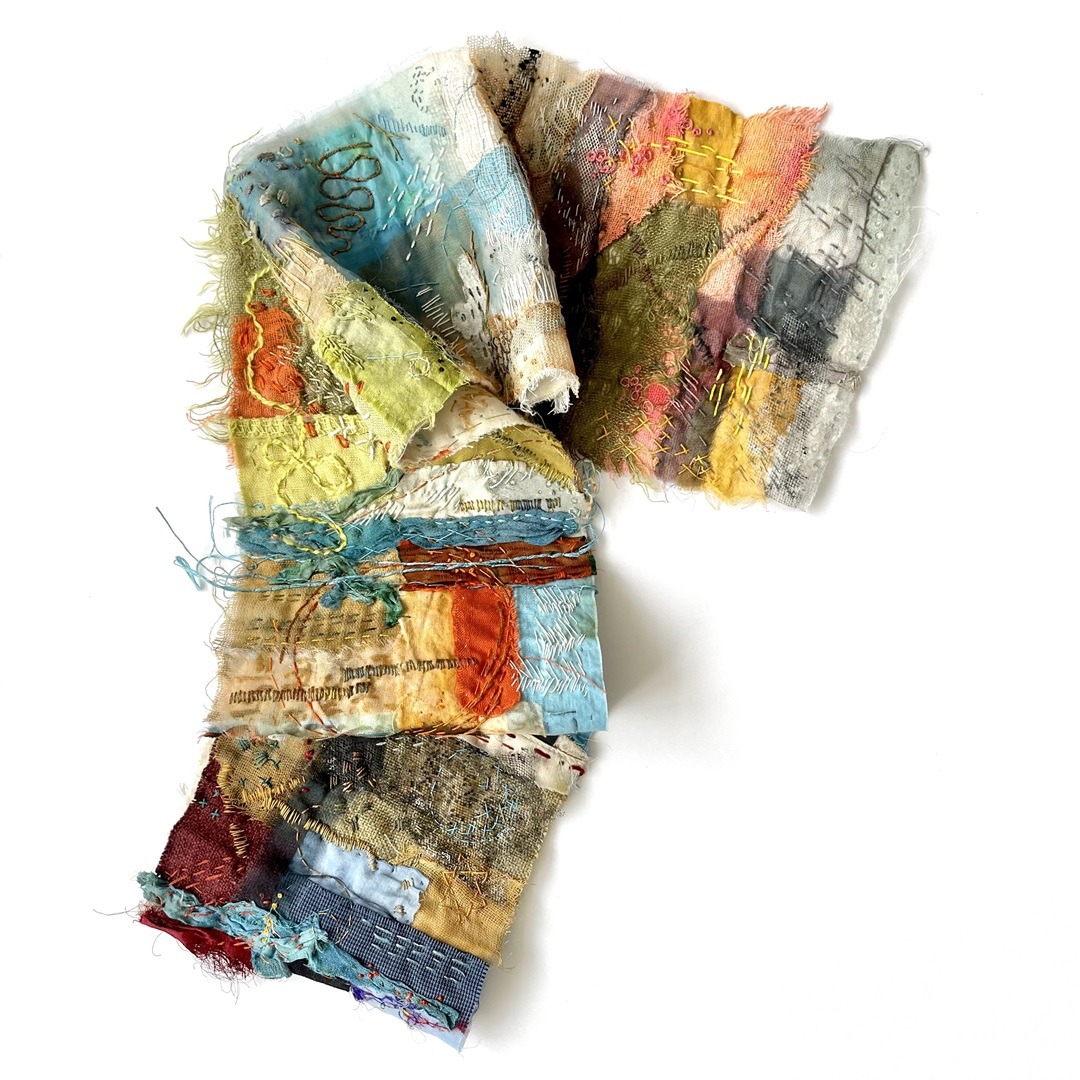
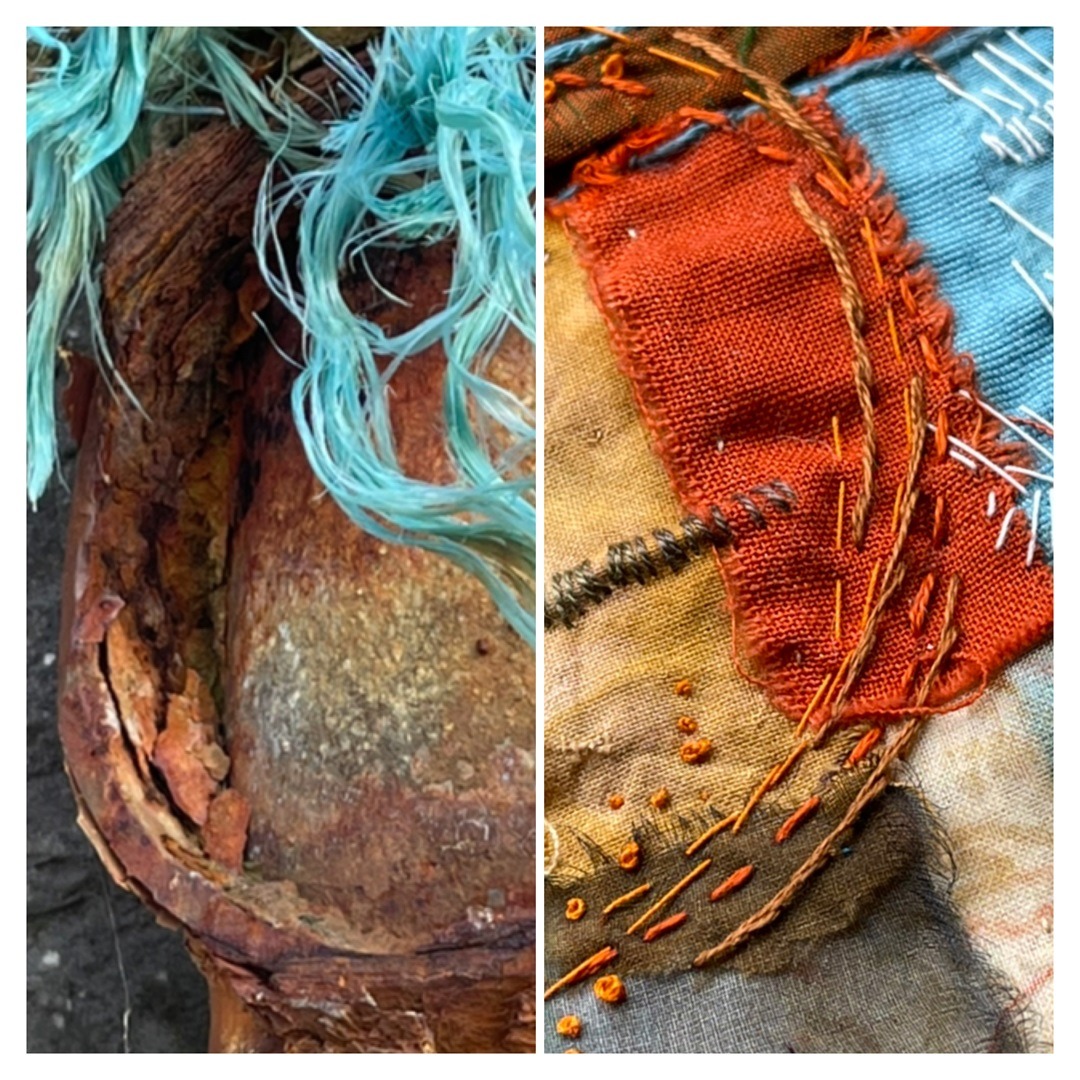
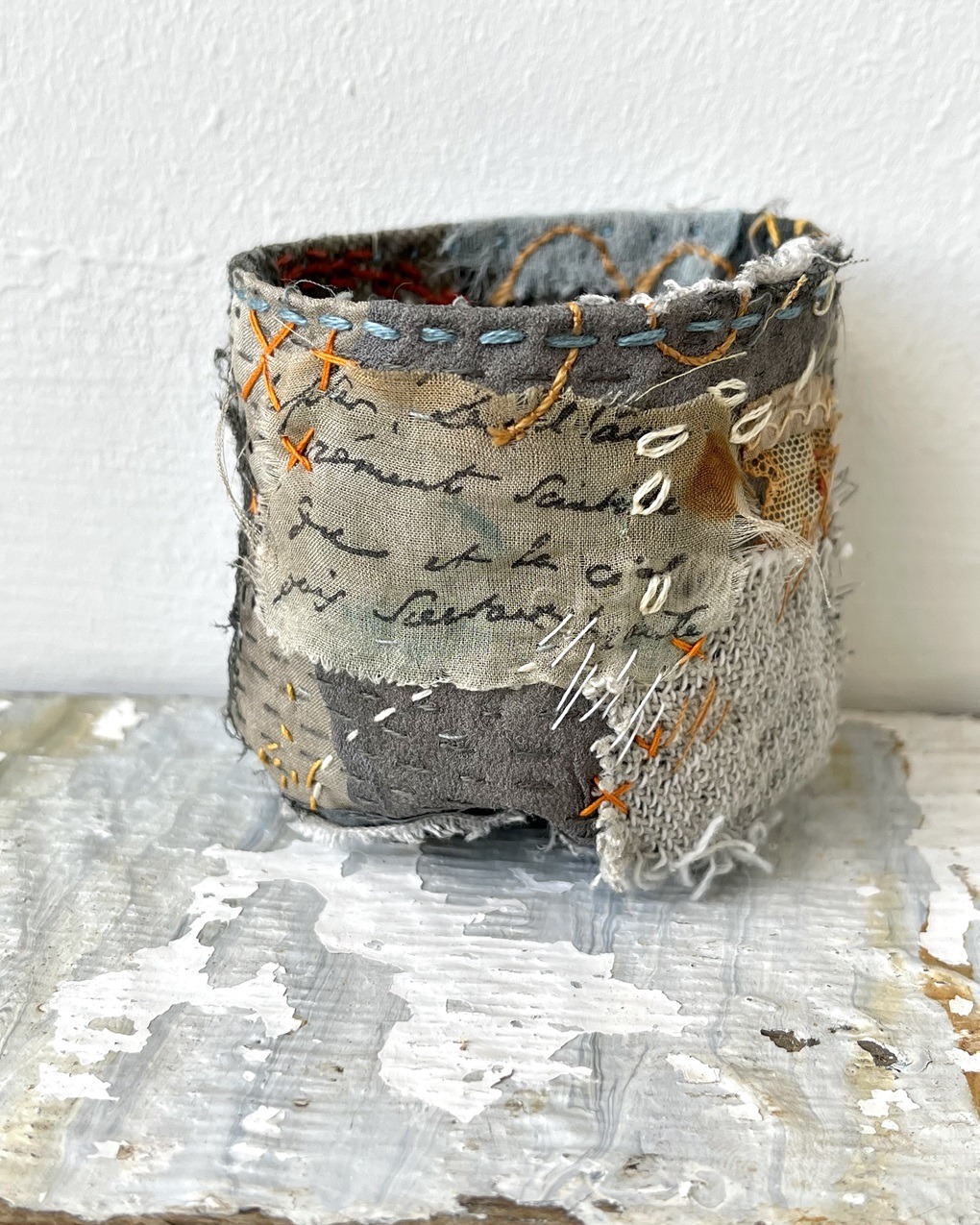
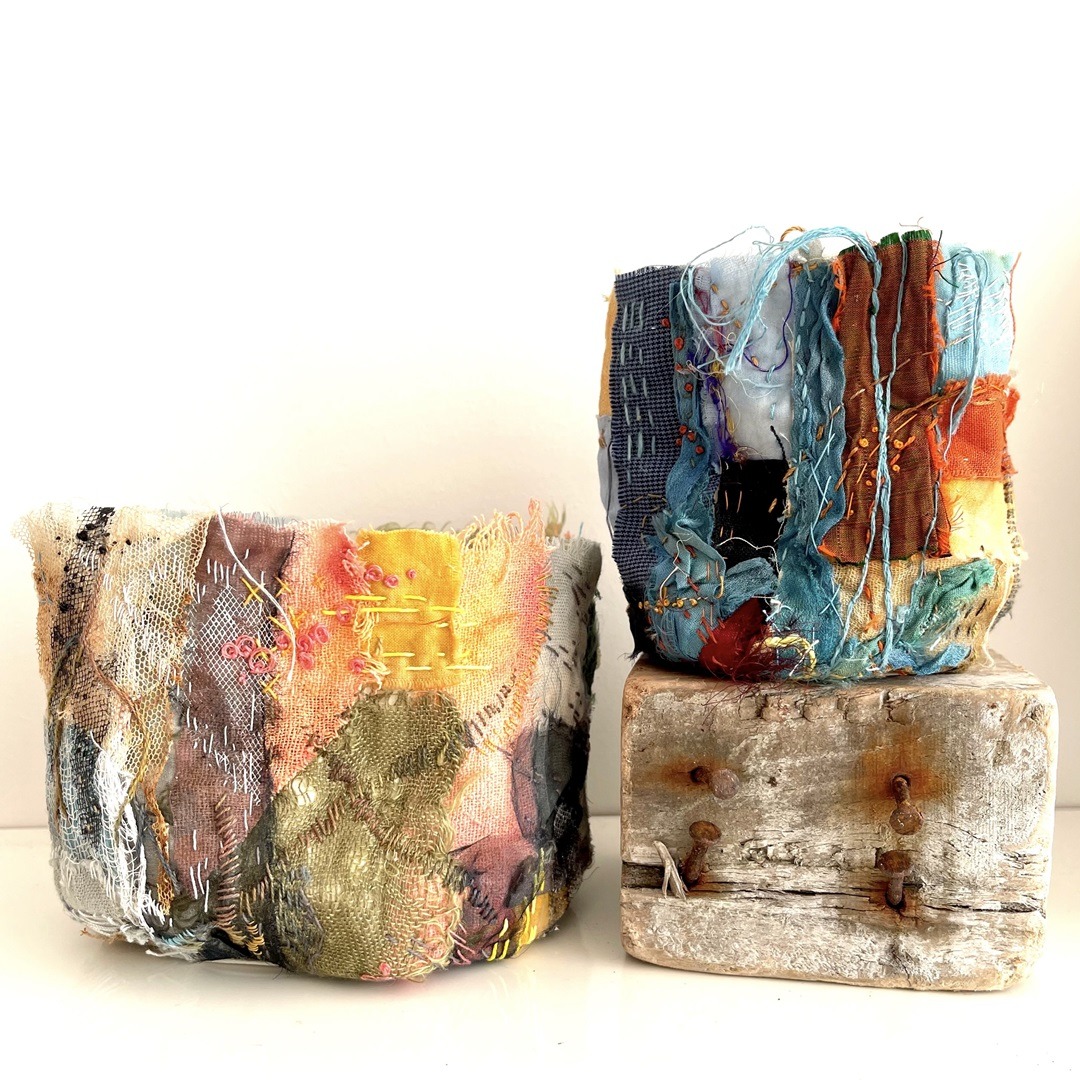
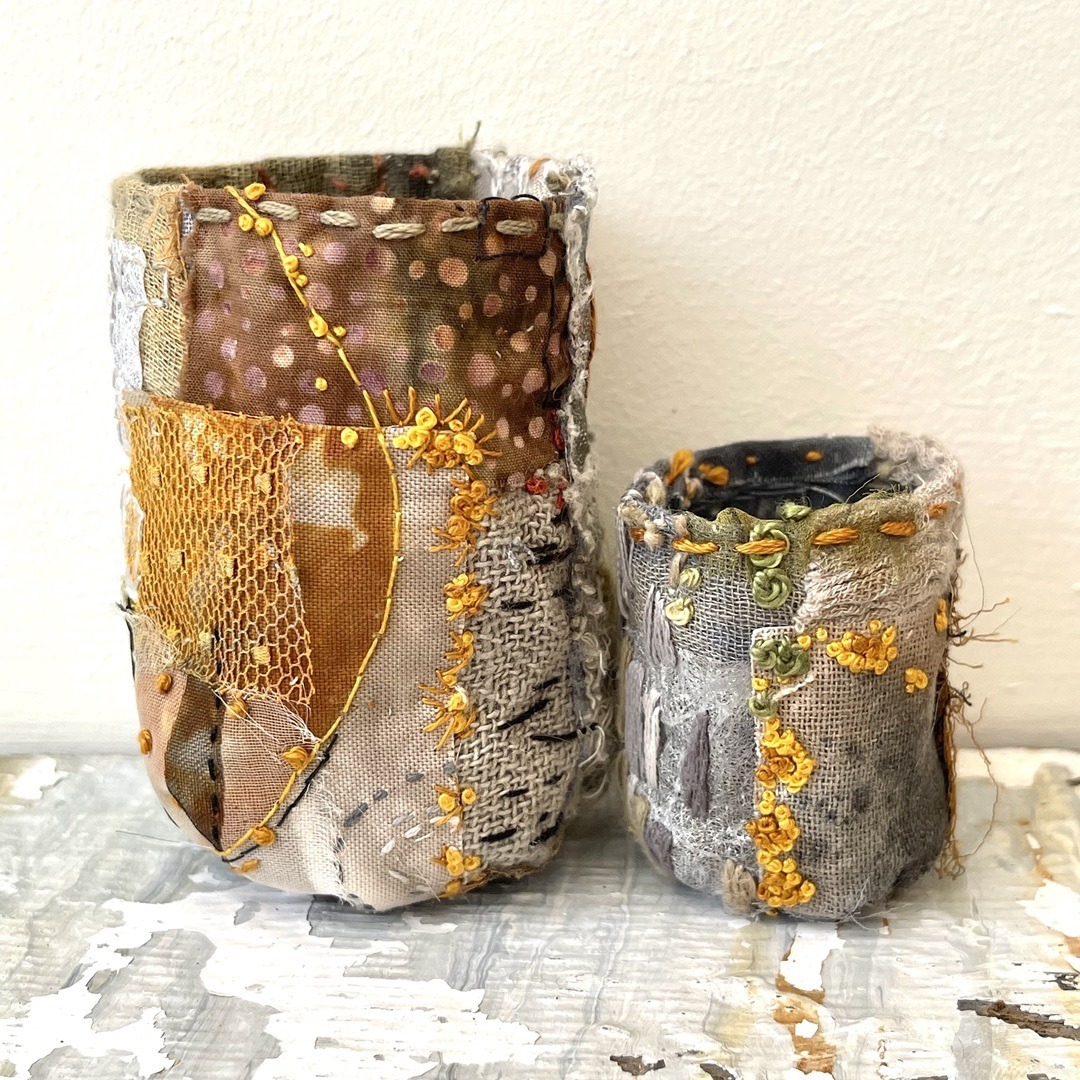
Cloth & clay
After finding me on social media, Martine Becquet, a Cumbria-based ceramicist, invited me to collaborate with her. She had relocated and was looking to work with a new artist.
After a preliminary chat, Martine sent me the first batch of vessels she had fired at home. I was very excited, but it took me ages to find the right solution. As is often the case, something great happens only after you get so frustrated you want to give up.
I always seek to respond to the tones on Martine’s pots. But when the smoke firing produces less dominant colours, it allows me an opportunity to experiment with different palettes. I use acrylic painted tea bag paper on a heavy Vlieseline Decovil 1 interlining. Vermicelli stitch is used to create a surface that allows colour to drift across. The tiny pebbles are chosen from my garden’s gravel path.
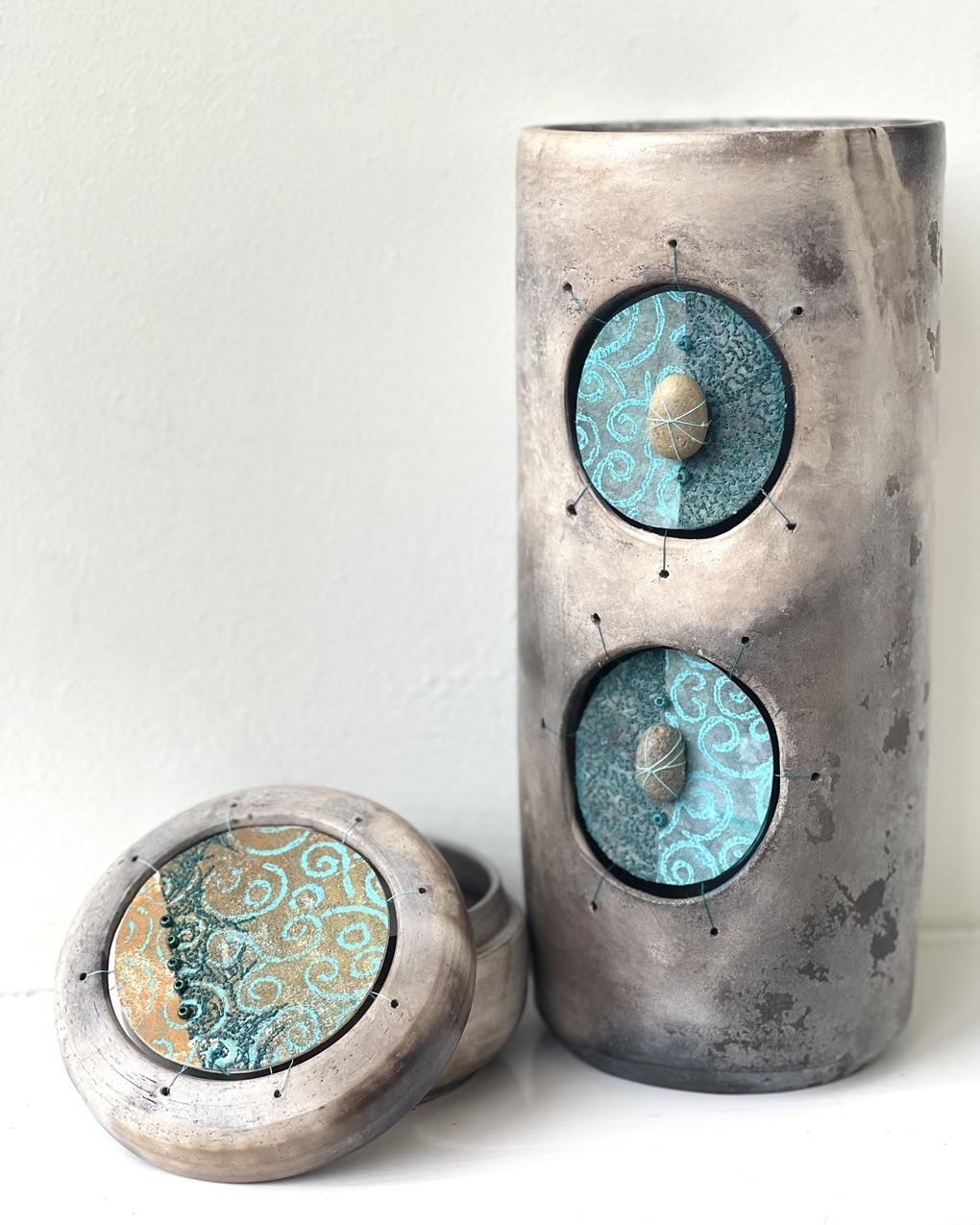
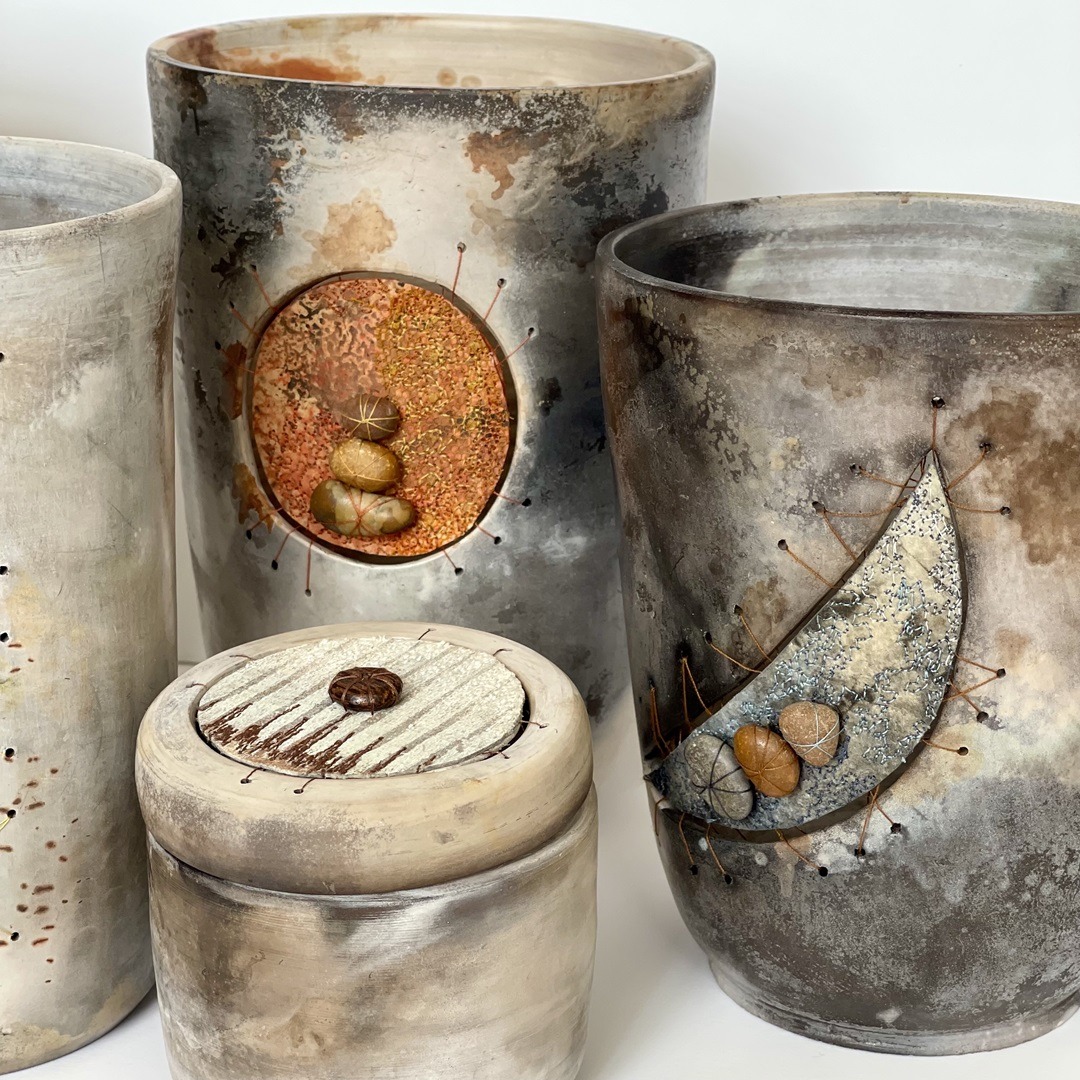
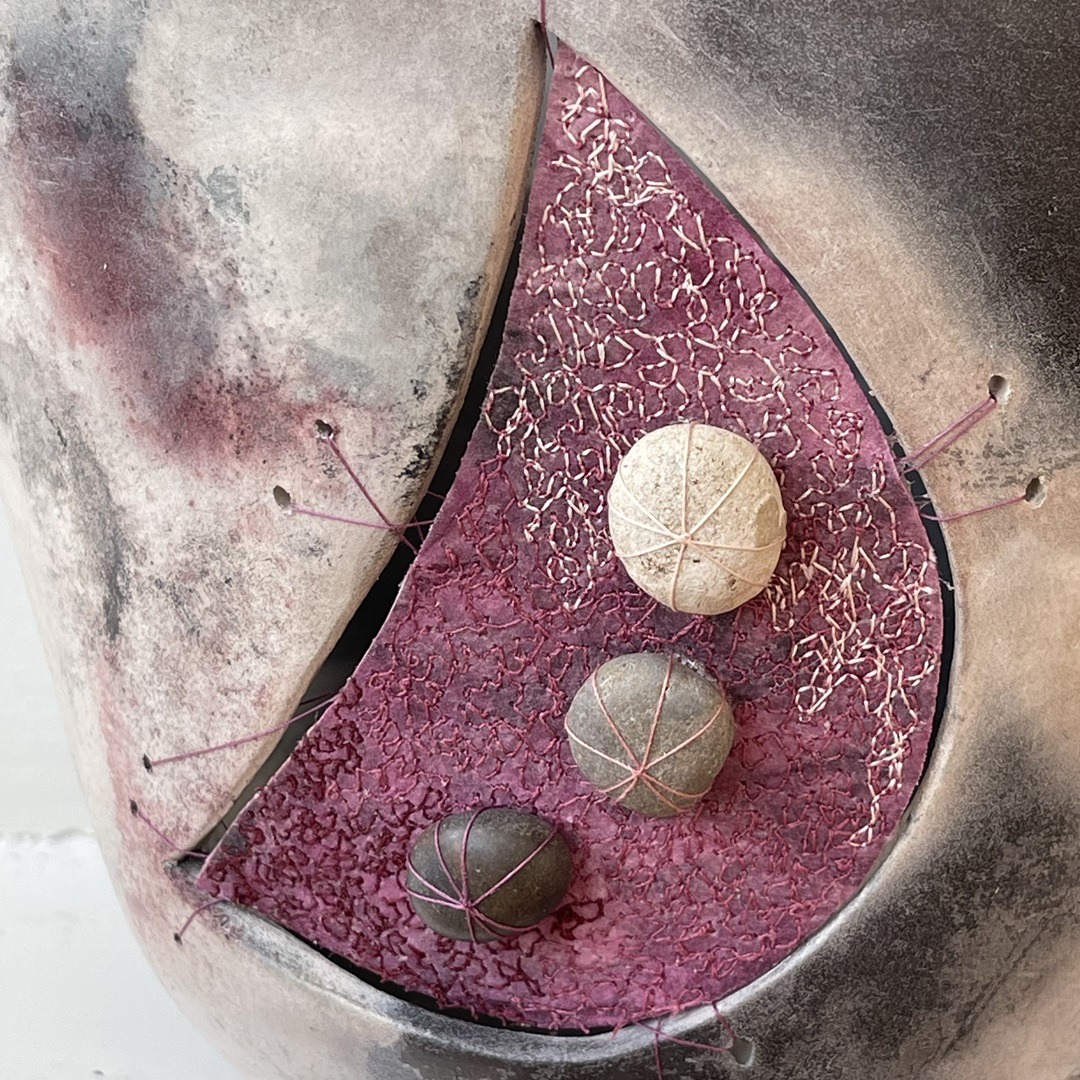
Noticeable edges
Some years back, my local textile group had a challenge theme of ‘noticeable edges’. I started exploring edges of papers and fabrics, and was interested in dip dyeing and using a monochrome palette to make the edges the focus of the piece.
I took samples of every paper and fabric I had and dipped them in India ink before playing with them. I waxed some, burnt others and generally had a wonderful time.
I also experimented making a vessel, including taking a silk fibre bowl with a fluffy, thready top whose edges I squeezed together to form a pod shape. The result made me laugh out loud with its ridiculous fluffy edge, and it was the moment the idea of black and white pods was born.
I made a tea bag papier mâché from an industrial waste product that comes from the tea factories in my part of the world. It’s incredibly strong and light, and I can stitch all over it without breakage. Each vessel has a unique noticeable edge, but they collectively belong together.
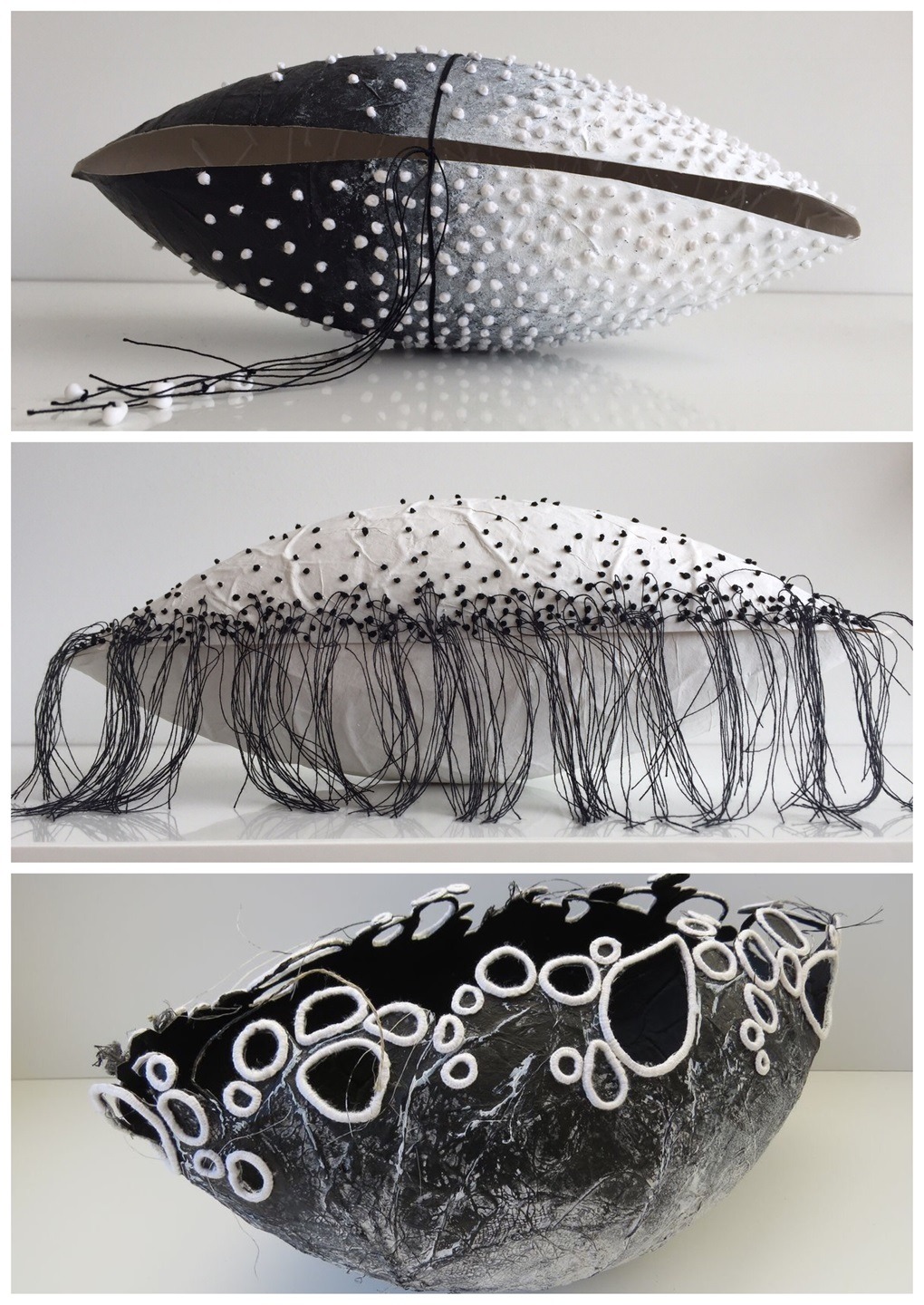
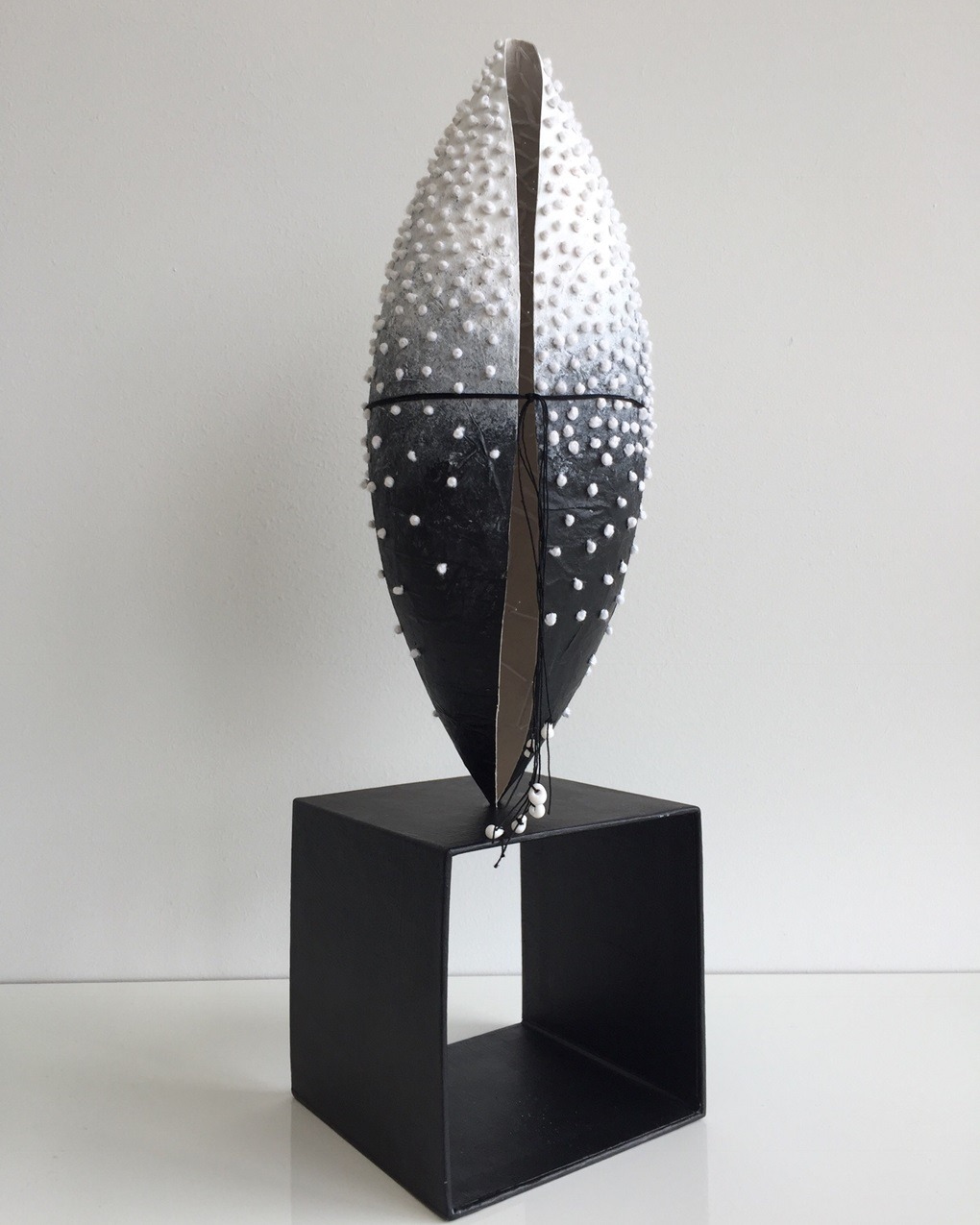
Artful thinking
“Like so many, I wrestled with the notion of calling myself an artist, and I still do at times.
It took time to develop through conversations with others and removing self judgement about that label.”
Rachael Singleton, Textile artist
I think the term evolves as culture changes, and in today’s world, perhaps there’s more room for inclusion. But it’s still a hotly debated topic.
If you view the word ‘artist’ as a verb, a way of seeing and doing, it’s so much more simple. I’ve always been an artist since childhood, but I’m now receiving acknowledgement from others, and I’m grateful for that.
I also enjoy thinking about the creative process. Part of my personality is that of a ‘sense maker’, and I’ve been using my blog over the past 10 years to round up some of what I’ve been doing in a way that brings another layer of clarity. Just as I love to synthesise materials in my work, I like to mentally synthesise ideas, practice, observations and connections.
My blog allows me to empty my head. When I post something, I feel I’ve understood something new that I can leave there and move on.
We know a lot more about creative thinking these days and how we need to employ different parts of our brain at various points. I think the freer creative side is more front and centre when I’m exploring inspiration and ideas.
My sense-maker side comes later when I evaluate and reflect upon what I created. The two sides can clash at times, like when I find myself overthinking when I should be more playful. But taking time to ask myself questions creates a deeper sense of purpose or provides a more motivating challenge.
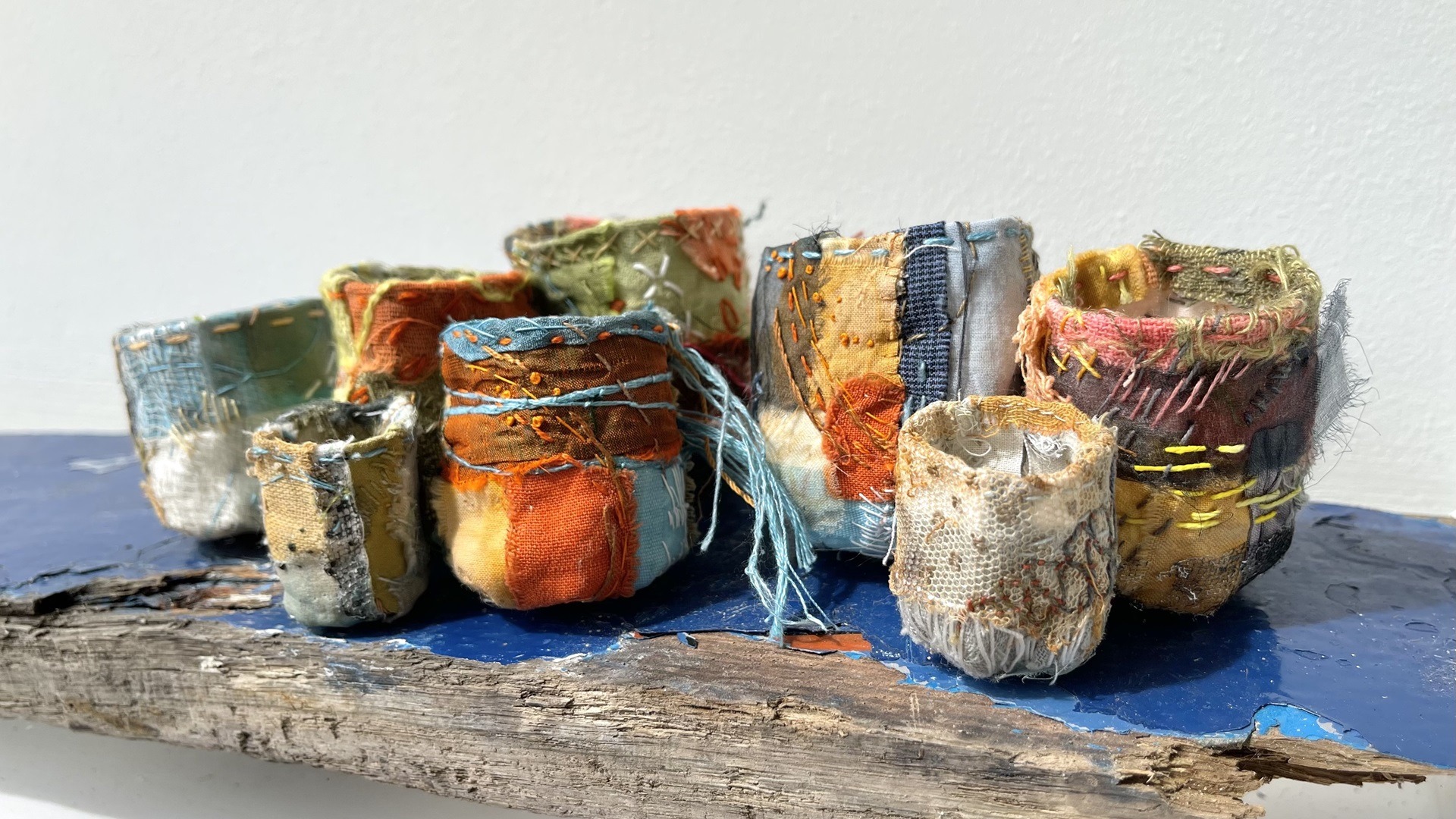
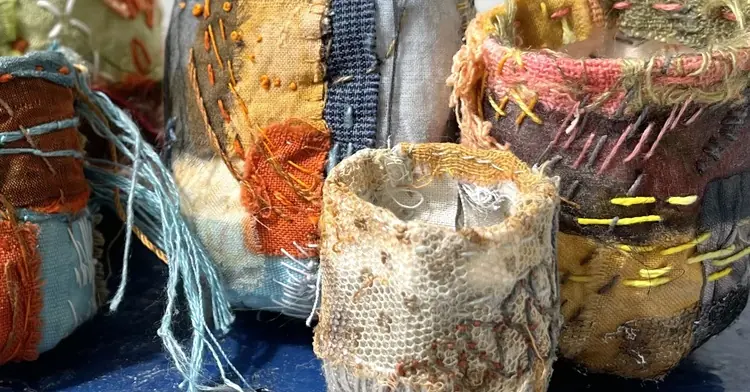

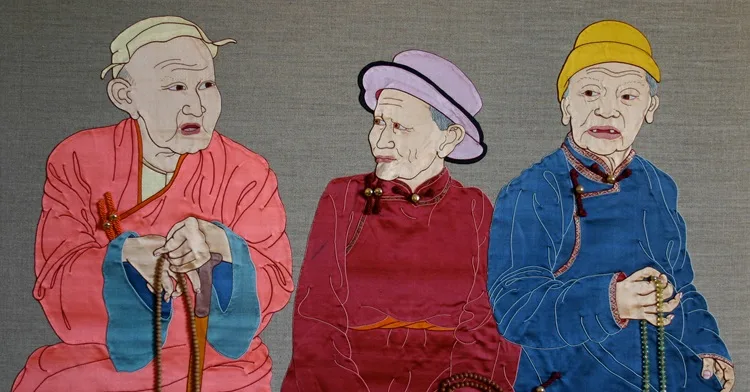
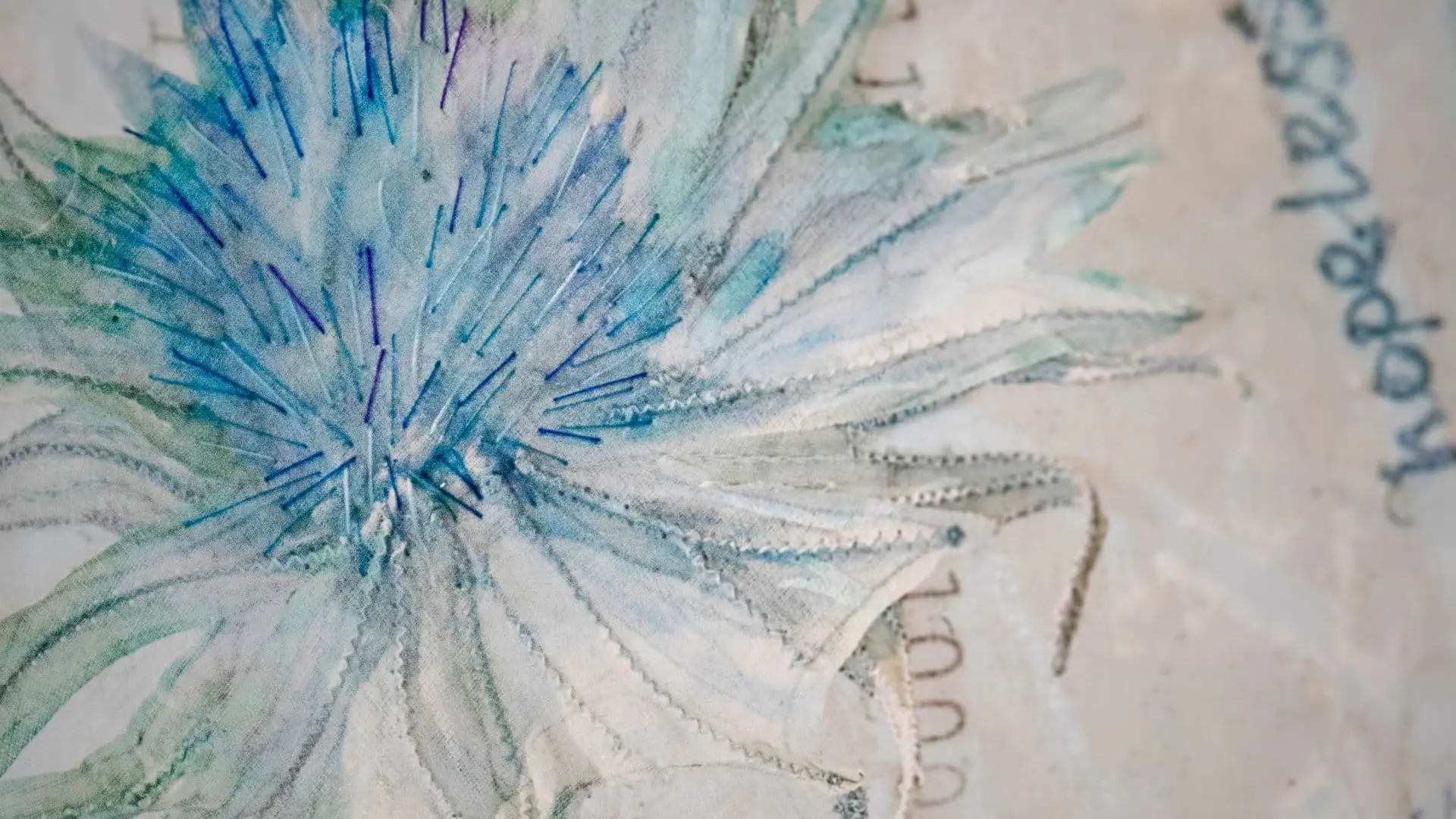
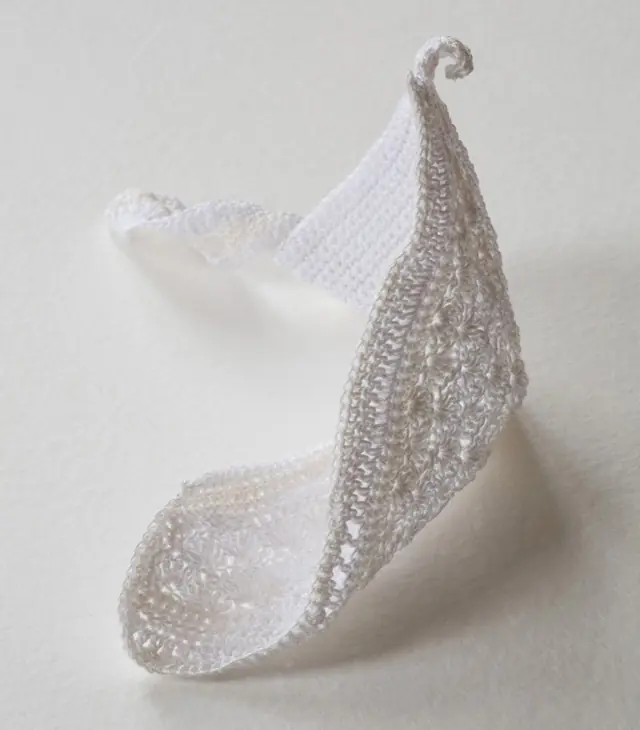
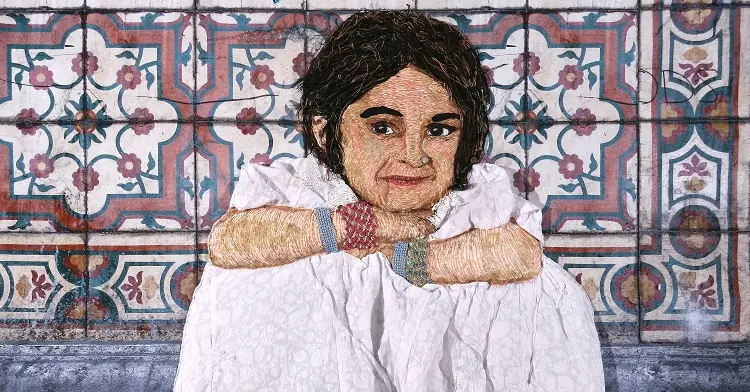
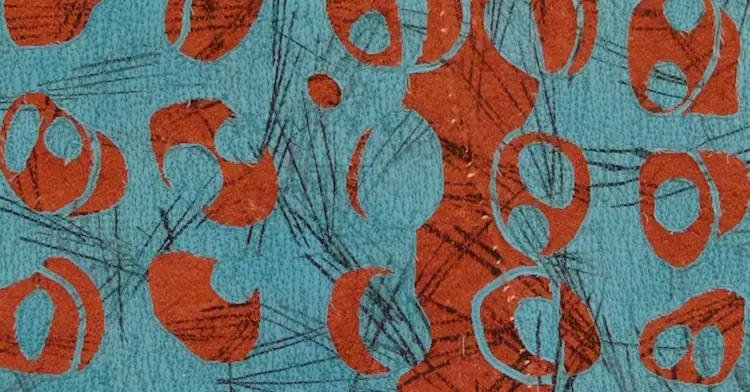
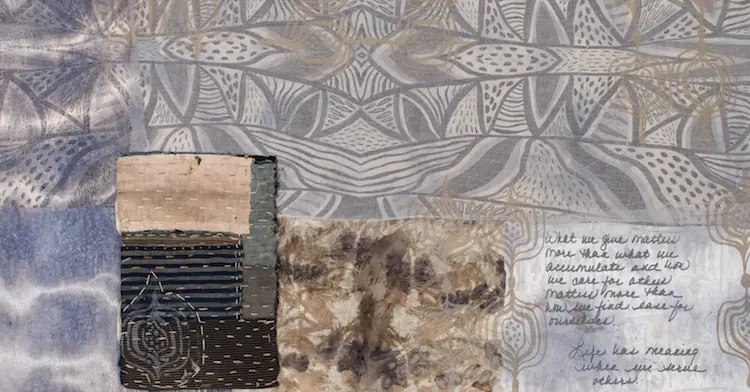
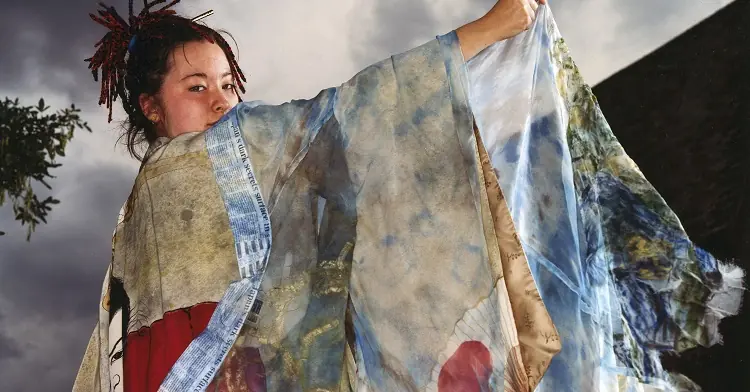
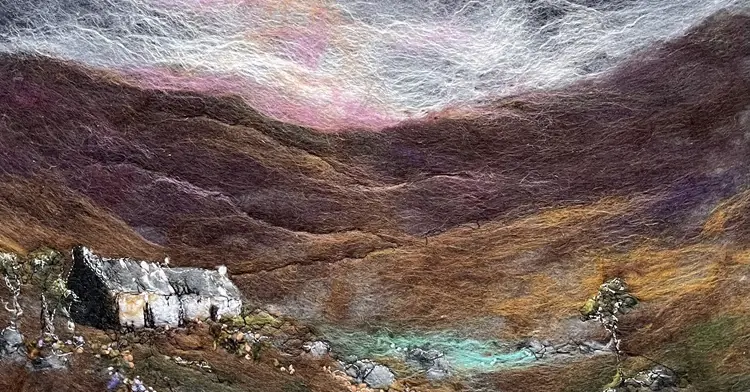
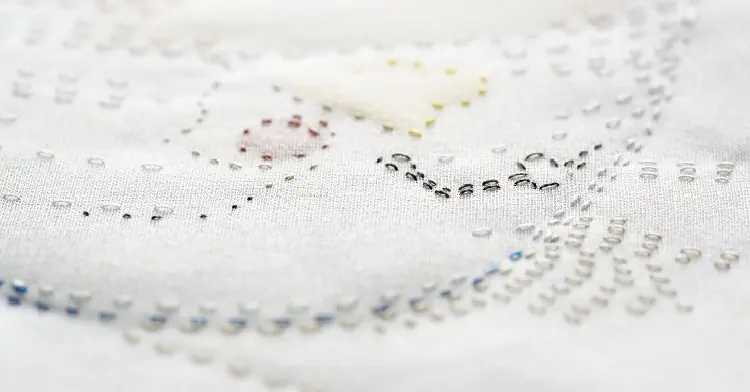
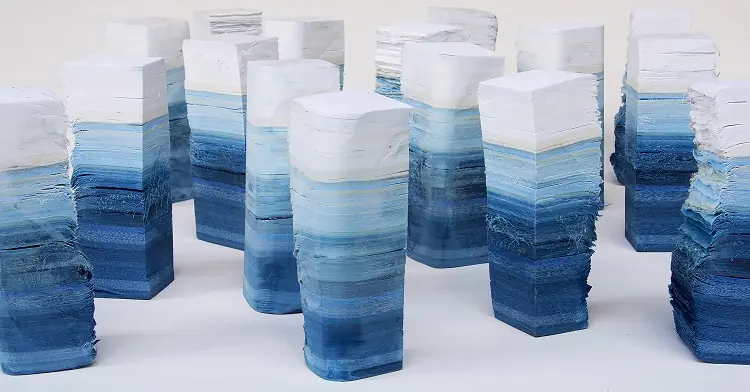
8 comments
Bev White
A fascinating read…thanks for allowed it to be posted!
Debbie Kufta
Your art and your personal reflections have been a gift to me as I navigate retirement and work through the phases of life’s transitions. You are a hero and mentor, bravely showing how to proceed with faith and resilience. Thank you so much. You are a dear friend; and yet, we’ve never met.
pat stidwill
I really admire your work and you are an inspiration to other who like textile art . Thank you.
myembdesigns digitizing
Thank you so much for sharing such a fantastic guideline.
Rachael Singleton
Glad you enjoyed the article
Inga Bruveris Zarins
Always wanting to learn more!
Suzy
Rachel Singleton is my most favorite maker. There is so much diversity in her work that it always encourages me to continue onward with some of my own weird thought-formed ideas. Her thoughts, colors and textural creations are an education in themselves. Thanks for interviewing her, it was awesome!
Rachael Singleton
Hi Suzy, thank you so much for your comments. All the best in your arty weirdness, bring it on and may it always bring you joy!